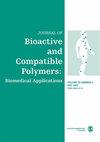Preparation and characterization of conductive nerve guide conduit filled with dual drug-loaded nanofibers
IF 2.1
4区 生物学
Q3 BIOTECHNOLOGY & APPLIED MICROBIOLOGY
引用次数: 2
Abstract
Peripheral nerve injury (PNI) has become one of the common clinical diseases. How to promote the regeneration and function recovery of the damaged peripheral nerve has been the focus of attention in the medical field. Evidence suggests that the longitudinal filling of oriented fibers in nerve guide conduit (NGC) is especially beneficial to the repair of long gap PNI. In this study, polypyrrole (PPy) nanospheres (PNSs) were prepared by the soft-templating method, and mixed with poly (lactic acid) (PLA) to prepare conductive PNSs/PLA NGC, and the optimal ratio of PNSs was 4.5%. PLA and vascular endothelial growth factor (VEGF) as shell, chitosan (CS) and paeoniflorin (PF) as core, oriented coaxial nanofibers were obtained and then filled into PNSs/PLA NGC. The composite NGC has excellent mechanical properties, electrical conductivity, hydrophilic properties, and degradation properties. Besides, the successive release of VEGF and PF can play a synergistic role in promoting nerve regeneration. In vitro experiments showed that the composite NGC was nontoxic and suitable for the adhesion and proliferation of nerve cells. In addition, PNSs combined with electrical stimulation (ES) can significantly promote the differentiation and proliferation of nerve cells, which is conducive to nerve regeneration. These positive results indicate that the composite NGC is a promising candidate in the repair of long gap PNI.双载药物纳米纤维填充神经传导导管的制备与表征
周围神经损伤(PNI)已成为临床常见疾病之一。如何促进受损周围神经的再生和功能恢复一直是医学界关注的焦点。有证据表明,神经导管内定向纤维的纵向填充尤其有利于长间隙PNI的修复。本研究采用软模板法制备聚吡咯(PPy)纳米微球(PNSs),并与聚乳酸(PLA)混合制备导电PNSs/PLA NGC, PNSs的最佳配比为4.5%。以聚乳酸(PLA)和血管内皮生长因子(VEGF)为外壳,壳聚糖(CS)和芍药苷(PF)为核心,制备定向同轴纳米纤维,并将其填充到聚乳酸/聚乳酸NGC中。复合材料NGC具有优异的力学性能、导电性、亲水性和降解性能。此外,VEGF和PF的连续释放可协同促进神经再生。体外实验表明,复合NGC无毒,适合神经细胞的粘附和增殖。此外,PNSs联合电刺激(ES)可显著促进神经细胞的分化和增殖,有利于神经再生。这些积极的结果表明,复合NGC是修复长间隙PNI的有希望的候选材料。
本文章由计算机程序翻译,如有差异,请以英文原文为准。
求助全文
约1分钟内获得全文
求助全文
来源期刊

Journal of Bioactive and Compatible Polymers
工程技术-材料科学:生物材料
CiteScore
3.50
自引率
0.00%
发文量
27
审稿时长
2 months
期刊介绍:
The use and importance of biomedical polymers, especially in pharmacology, is growing rapidly. The Journal of Bioactive and Compatible Polymers is a fully peer-reviewed scholarly journal that provides biomedical polymer scientists and researchers with new information on important advances in this field. Examples of specific areas of interest to the journal include: polymeric drugs and drug design; polymeric functionalization and structures related to biological activity or compatibility; natural polymer modification to achieve specific biological activity or compatibility; enzyme modelling by polymers; membranes for biological use; liposome stabilization and cell modeling. This journal is a member of the Committee on Publication Ethics (COPE).
 求助内容:
求助内容: 应助结果提醒方式:
应助结果提醒方式:


